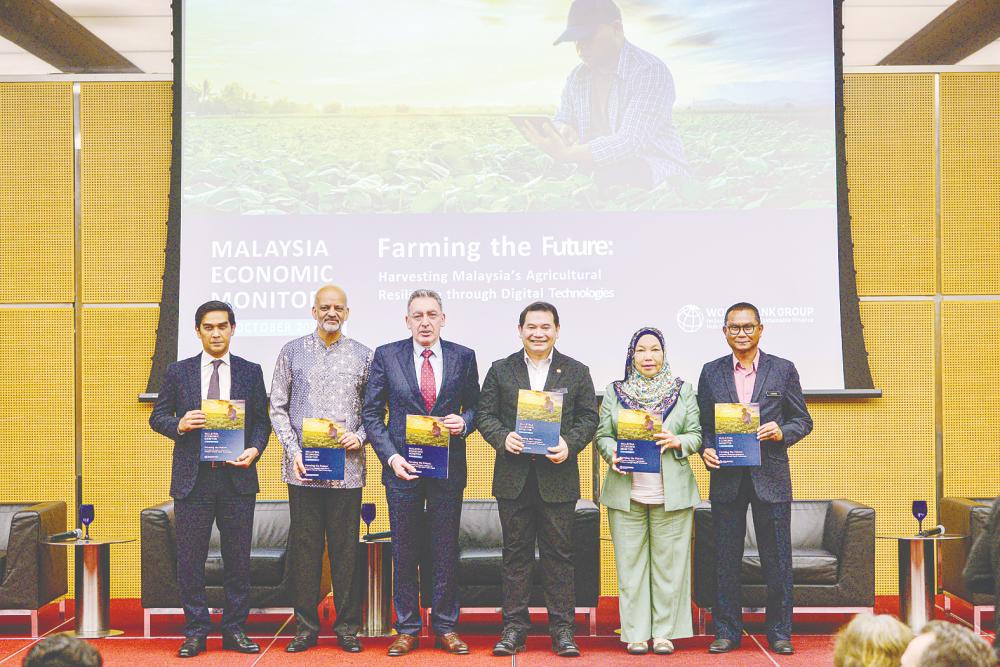KUALA LUMPUR: Malaysia’s government is examining ways to optimise the country’s development expenditure and address areas such as bulk and blanket subsidies, which have historically been the key focus.
Economy Minister Rafizi Ramli said while the government recognises the need to increase revenue, there is potential to optimise spending.
“Internally, we have been examining ways to optimise development expenditure. It is a common public concern to question the cost of building infrastructure, such as schools, hospitals, or even a kilometre of road. This highlights the importance of transparency and efficiency in allocating these resources.
“We are currently undergoing this process and have done everything possible to optimise spending and provide the best value. At the same time, we aim to grow the economy so that the population’s income reaches a higher level. Any discussion about generating revenue must also be benchmarked against this goal, which is the government’s current approach,“ he told reporters at the unveiling of the World Bank Malaysia Economic Monitor report today.
From the Economic Ministry’s perspective, he added, the government has a responsibility to show the public that the ministry is doing everything possible to optimise the use of taxpayer money.
Rafizi said the public will only perceive a shortfall in outcomes if costs are optimised and value is maximised for each ringgit spent.
“For example, if building a school should cost RM30 million, we must ensure it does not inflate to RM40, RM50 or RM60 million. At the macro level, while the government may allocate a significant portion of the budget to development, it might generate a different economic impact, especially in areas like social services, education, health, and upskilling.”
Touching on domestic agriculture, Rafizi said Malaysia, like most developing countries, pivoted away from agriculture to diversify its economy. He said since 1974, domestic agriculture’s contribution to gross domestic product steadily declined from about 30% to just under 10% in 2022.
“Commodities took a back seat and made way for manufacturing and construction. The conventional view favoured buildings over paddy fields. Our challenge is that the agriculture industry suffers from a modernisation gap. If you look at productivity, the value added per hour worked has declined from RM25.20 in 2015 to RM24.80 in 2023. Meanwhile, manufacturing and services are roughly twice as productive.
“This puts downward pressure on wages. A sector where employment is still growing at 4.2%, but most of it comes from rural areas. This has destructive social implications,“ Rafizi said.
Failure to address this will leave Malaysia with a “Detroit Dilemma”, where the automobile industry in the US city was decimated, causing a backlash at the ballot box.
“For us, the case for modernisation is not just good economics. There is a real social impetus for the government to act quickly,“ Rafizi said, adding that solving this requires building a new economic argument for agriculture.
“Our ambition is to revive and refocus agriculture as a growth driver for the new economy. Increasing productivity results in higher wages and output, which will minimise social division and food dependence. The means to do so is embracing technology in stages.”
Rafizi highlighted the removal subsidies, first for chicken and then for diesel, earlier this year.
“The lessons learnt, in terms of implementation and mechanism, help guide future decisions for eggs and petrol.
“I believe this measured pace has helped with policy signalling. People are beginning to understand that each subsequent policy announcement is building on the previous one.
“Investors can see the narrative the government is pushing and sense momentum building in the economy.
“That is one of the reasons Malaysia recorded a 5.1% growth in the first half of 2024. And last week, the World Bank revised our growth forecast from 4.3% to 4.9%.
“And if we can reposition agriculture as a the core driver for the economy, I think we will get there,“ he said.
World Bank country director for Brunei, Malaysia and the Philippines Dr Zafer Mustafaoglu said Malaysia’s economy has rebounded strongly in the first half of 2024, after a period of weaker-than-expected growth last year.
He said the recovery has been driven by robust private consumption, increased investment with higher foreign direct
investment inflows, and an improvement in export performance.
“Additionally, Malaysia’s GDP per capita, often seen as a proxy for welfare, has now surpassed pre-pandemic levels, placing the country ahead of many of its Asean peers.
“Looking ahead, the World Bank projects that Malaysia’s economy will grow by 4.9% in 2024, up from 3.6% in 2023. This revised forecast is 0.6 percentage points, or 14% higher than previous estimates, reflecting strong growth in consumption, investment, and trade activity.









